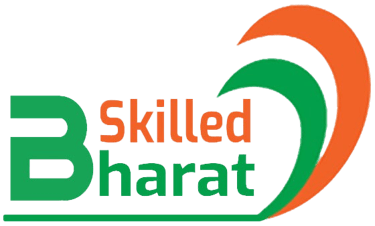Industrial Plant Safety
Industrial Plant Safety: Courses, Fees, Requirements, and Career Growth


Industrial Plant Safety: Courses, Fees, Requirements, and Career Growth
Industrial plant safety is a critical aspect of operations in industries such as manufacturing, oil and gas, chemical processing, and power generation. Ensuring the safety of workers, equipment, and the environment is paramount, and professionals trained in industrial safety are in high demand. This blog explores the importance of industrial plant safety, available courses, fee structures (in USD and INR), requirements, and the growth potential for professionals in this field.
Importance of Industrial Plant Safety
Industrial plants are complex environments with hazards like heavy machinery, high-pressure systems, hazardous chemicals, and electrical risks. A robust safety framework reduces workplace accidents, protects employees, ensures regulatory compliance, and minimizes operational downtime. Key safety practices include risk assessments, emergency response planning, personal protective equipment (PPE) usage, and adherence to standards like OSHA (Occupational Safety and Health Administration) or ISO 45001.
Investing in safety training not only saves lives but also enhances a company’s reputation and financial performance by reducing costs associated with accidents, legal penalties, and insurance claims.
Industrial Plant Safety Courses
Numerous courses cater to professionals seeking to specialize in industrial plant safety. These range from short certifications to comprehensive degree programs. Below are some popular options:
1. OSHA Certifications
OSHA 10-Hour General Industry: Entry-level course covering basic safety principles.
OSHA 30-Hour General Industry: In-depth training for supervisors and safety officers.
Focus: Hazard identification, fall protection, electrical safety, and PPE.
Duration: 10–30 hours.
Mode: Online or in-person.
2. NEBOSH International General Certificate (IGC)
Overview: Globally recognized qualification for health and safety professionals.
Focus: Risk management, workplace hazards, and safety systems.
Duration: 80–120 hours (typically 10–12 weeks part-time).
Mode: Online, classroom, or blended.
3. Certified Safety Professional (CSP)
Overview: Advanced certification for experienced safety professionals.
Focus: Safety management systems, risk assessment, and regulatory compliance.
Duration: Self-paced study (exam-based).
Mode: Online study with in-person exams.
4. Diploma in Industrial Safety
Overview: Comprehensive program offered by institutions like the National Safety Council or universities.
Focus: Fire safety, chemical handling, ergonomics, and emergency response.
Duration: 6–12 months.
Mode: Online or classroom.
5. Specialized Short Courses
Confined Space Entry: Training for working in restricted spaces.
Lockout/Tagout (LOTO): Procedures to control hazardous energy.
Fire Safety and HAZWOPER: Handling hazardous materials and emergency response.
Duration: 1–5 days.
Mode: In-person or online.
Fee Structure
Course fees vary based on the provider, course level, and delivery mode. Below is an approximate fee structure (as of 2025) in USD and INR (assuming 1 USD = 83 INR for approximation):
OSHA 10-Hour: $80–$150 (₹6,640–₹12,450) online, $200–$400 (₹16,600–₹33,200) in-person.
OSHA 30-Hour: $150–$300 (₹12,450–₹24,900) online, $400–$800 (₹33,200–₹66,400) in-person.
NEBOSH IGC: $1,000–$2,500 (₹83,000–₹207,500) (includes study materials and exam fees).
Certified Safety Professional (CSP): $350–$500 (₹29,050–₹41,500) (exam fee) + $500–$1,000 (₹41,500–₹83,000) (study materials).
Diploma in Industrial Safety: $500–$2,000 (₹41,500–₹166,000) online, $2,000–$5,000 (₹166,000–₹415,000) classroom.
Short Courses (e.g., Confined Space, LOTO): $100–$500 (₹8,300–₹41,500) per course.
Note: Prices may vary by region and institution. Some employers sponsor training, and financial aid or scholarships may be available for degree programs.
Requirements for Enrolling in Safety Courses
Requirements depend on the course level and institution. Common prerequisites include:
Basic Qualifications: High school diploma or equivalent for entry-level courses (e.g., OSHA 10-Hour).
Experience: 1–3 years of work experience in safety or related fields for advanced certifications like CSP or NEBOSH.
Educational Background: Bachelor’s degree in engineering, occupational health, or a related field for CSP or diploma programs.
Language Proficiency: Proficiency in English for international certifications like NEBOSH.
Physical Fitness: Some courses (e.g., confined space training) may require physical capability assessments.
Prerequisites: For CSP, candidates need a lower-level certification like ASP (Associate Safety Professional).
No prior experience is typically required for short courses or OSHA certifications, making them accessible to beginners.
Probabilities of Growth for Safety Professionals
The demand for industrial safety professionals is growing due to stricter regulations, increased awareness of workplace safety, and the expansion of industrial sectors. Below are key factors driving career growth:
1. Industry Demand
Industries like oil and gas, construction, manufacturing, and renewable energy require safety professionals to comply with regulations and mitigate risks.
The global push for sustainability and environmental safety has increased the need for experts in hazardous material handling and emergency response.
2. Job Roles and Salaries
Roles: Safety Officer, HSE (Health, Safety, and Environment) Manager, Risk Assessor, Compliance Auditor, Safety Consultant.
Salary Range (2025):
Entry-level (e.g., Safety Technician): $40,000–$60,000/year (₹33,20,000–₹49,80,000/year).
Mid-level (e.g., Safety Officer): $60,000–$90,000/year (₹49,80,000–₹74,70,000/year).
Senior-level (e.g., HSE Manager, CSP): $90,000–$150,000+/year (₹74,70,000–₹1,24,50,000+/year).
Salaries vary by region, industry, and experience.
3. Career Progression
Entry-level professionals can start with OSHA or short courses and progress to NEBOSH or CSP certifications.
With experience, professionals can move into consultancy, corporate safety management, or regulatory roles.
Continuous learning (e.g., advanced certifications, leadership training) enhances promotion prospects.
4. Global Opportunities
Certifications like NEBOSH and CSP are recognized worldwide, enabling professionals to work in regions like the Middle East, Europe, and North America, where industrial projects are booming.
The rise of remote safety audits and online training platforms has created flexible, global job opportunities.
5. Growth Statistics
The U.S. Bureau of Labor Statistics (BLS) projects a 7% growth rate for occupational health and safety specialists from 2020 to 2030, faster than the average for all occupations.
Emerging sectors, such as renewable energy and automation, are expected to create new safety roles, resulting in a 10–15% increase in demand over the next decade.
Challenges and Tips for Aspiring Professionals
Challenges
Keeping Up with Regulations: Safety standards evolve, requiring continuous learning.
High Responsibility: Safety professionals are accountable for preventing accidents, which can be stressful.
Fieldwork Demands: Some roles involve working in hazardous or remote locations.
Tips
Start Small: Begin with affordable, entry-level courses like OSHA 10-Hour to build foundational knowledge.
Network: Join professional organizations like the American Society of Safety Professionals (ASSP) to access resources and job opportunities.
Stay Updated: Follow industry trends, such as digital safety tools (e.g., IoT for hazard monitoring) and sustainability practices.
Pursue Advanced Certifications: Invest in NEBOSH or CSP to stand out in the job market.
Conclusion
Industrial plant safety is a rewarding and growing field that offers diverse career paths for professionals committed to protecting lives and ensuring operational excellence. With accessible courses, varying fee structures, and clear requirements, anyone from a beginner to an experienced professional can enter or advance in this field. The probability of growth is high, driven by global industrial expansion and regulatory demands. By investing in the right training and staying updated with industry trends, safety professionals can build fulfilling, high-impact careers.
